The Rockaway Peninsula in Queens attracts millions of New Yorkers each increasingly sweltering summer, who arrive by car, subway, ferry, or bike in droves to luxuriate along a 7-mile-long stretch of public beaches. These perennial visitors may be less familiar with the dense residential neighborhoods on the peninsula’s eastern tip, such as the long-neglected Edgemere, where New York’s “first net-zero community,” Arverne East, is rising. Led by the New York City Department of Housing Preservation and Development (HPD), the nearly $1 billion project will provide 1,650 units of housing when the final phase is completed in 2031. Eighty percent of the apartments will be affordable, designated for formerly homeless and low-to-middle- income households.
A multi-purpose nature and welcome center with all-important public bathroom facilities, designed by WXY architecture + urban design, was completed late last year as part of the development’s first phase, which also includes a 35-acre nature preserve by landscape architecture studio Starr Whitehouse. Descending from the subway on a brisk winter day, I spotted the new building immediately from across Rockaway Freeway—though diminutive and low-slung, it is striking against the coastal backdrop. It sits in the middle of the development site’s length, which stretches just over a mile from Beach 56th Place to Beach 32nd Street, with the lush planting and meandering paths of the preserve to the project’s west, and a still-barren construction site, pending future housing, to its east.
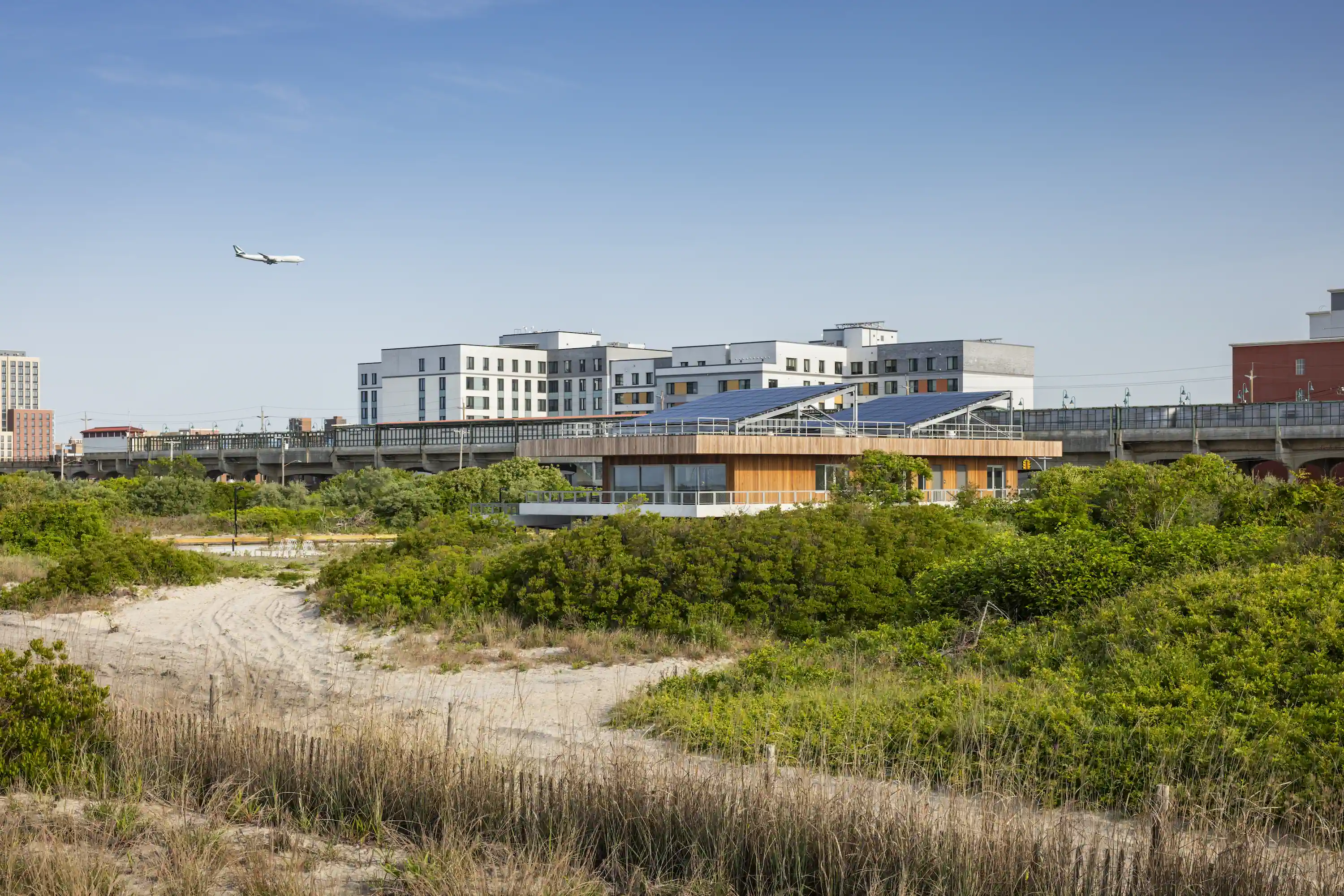
Photo © Albert Vecerka/Esto, courtesy WXY architecture + urban design
When Superstorm Sandy touched down in New York in 2012, the collection of neighborhoods that make up the Rockaways bore the brunt of the destruction. Flooding destroyed fragile dune ecosystems and already deteriorating housing stock and businesses, with the damage further compounded by electrical fires that broke out as saltwater mingled with electrical equipment. Since then, millions of public dollars have been poured into rebuilding the area’s infrastructure and ecosystem; the funds, however, have not been equally distributed. While communities on the western peninsula have rebounded, the primarily Black and working-class neighborhood of Edgemere has not seen the same investment. The 116-acre oceanfront site where Arverne East is taking shape was originally cleared in the 1970s as part of an urban renewal plan to develop new low- and middle-income housing but has since sat vacant; this development marks the much delayed fulfillment of the city’s promises.
New York-based WXY has long been involved with building in the Rockaways, both before and after the catastrophic impact of Sandy. In 2012, the multidisciplinary practice was commissioned by the Parks Department and the New York City Economic Development Corporation to reconstruct and storm-proof the entire 5.5-mile-long public boardwalk, a long-term project that was completed in 2017; it also developed an overarching conceptual plan to improve existing parks across the peninsula.
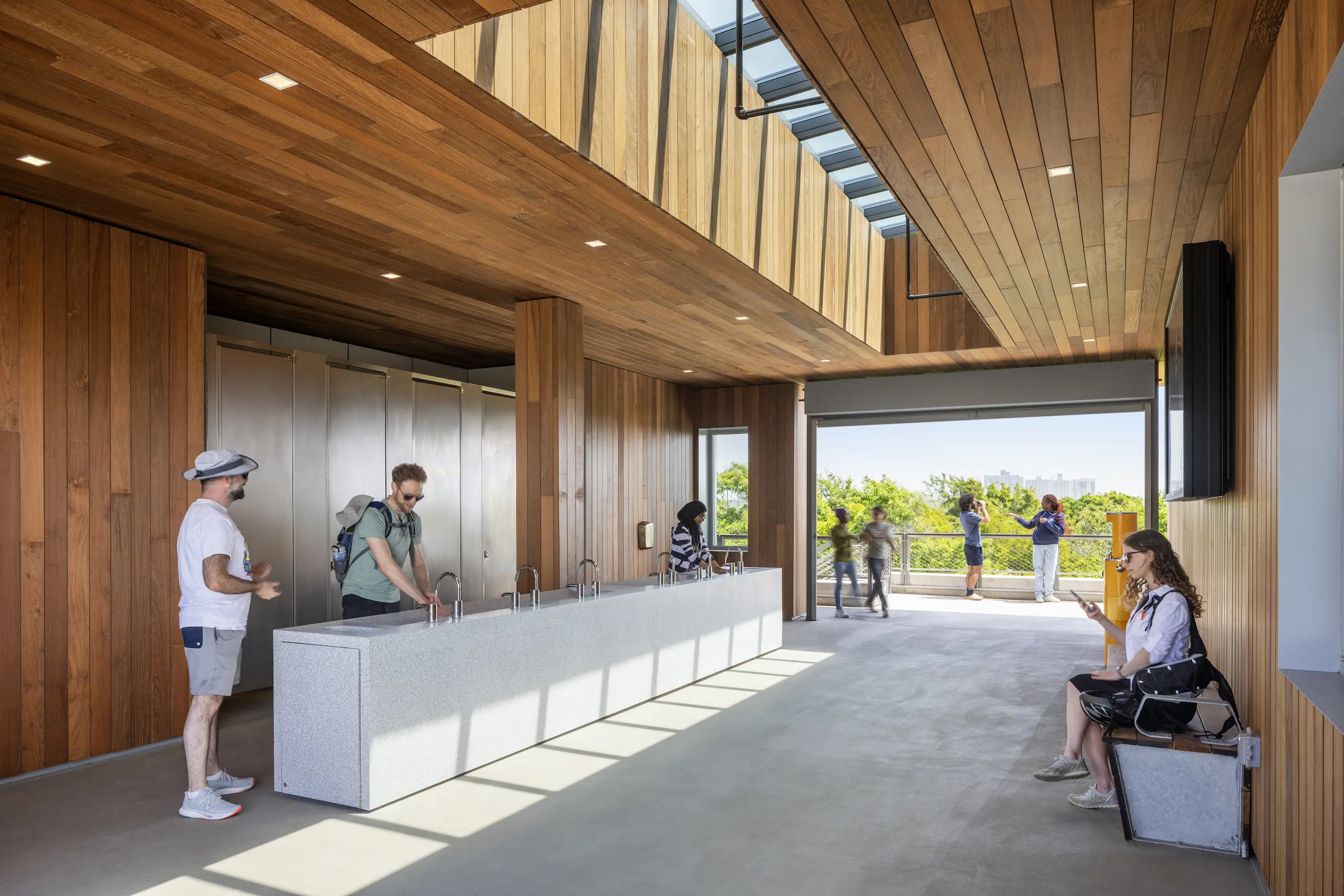
1
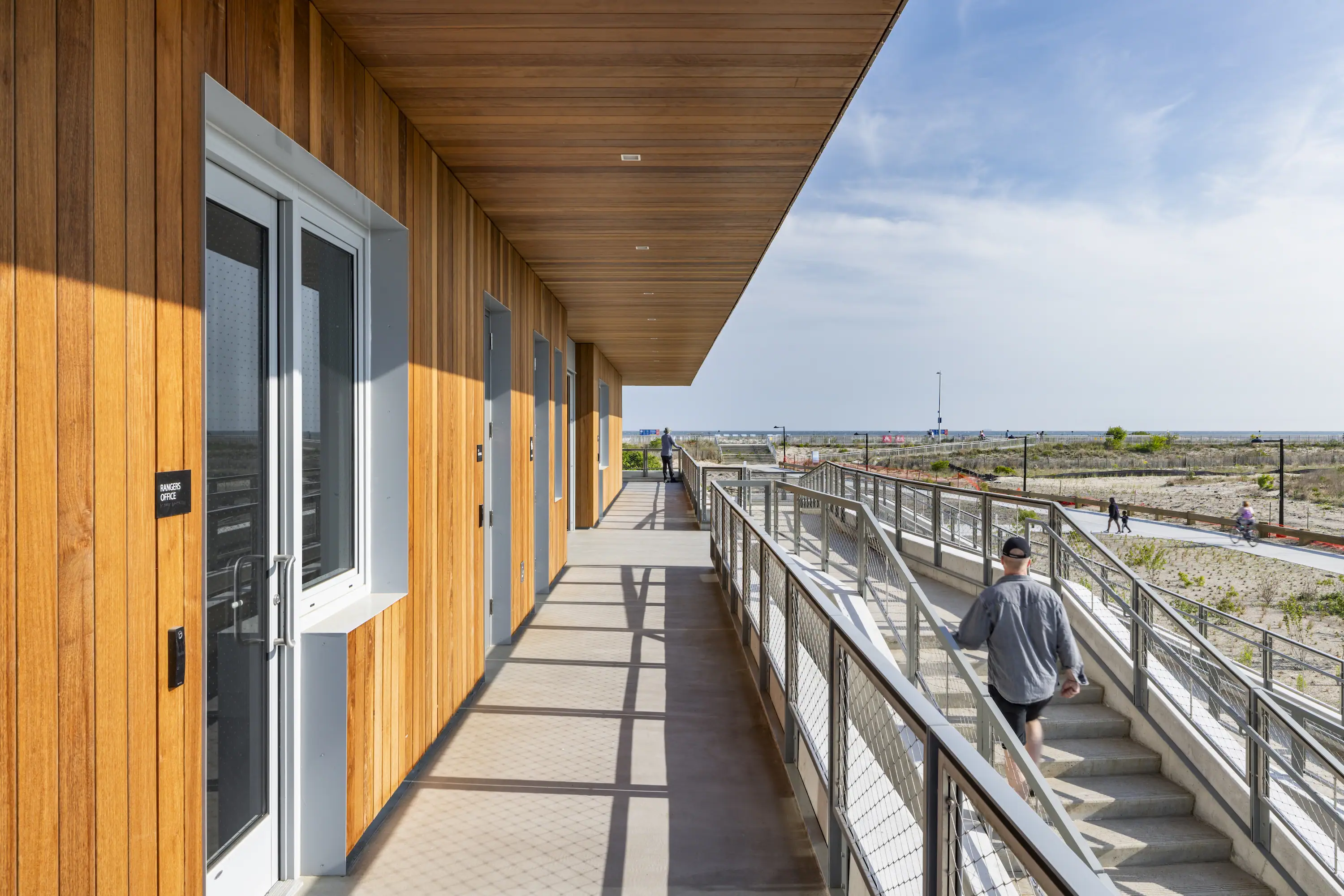
2
Photos © Albert Vecerka/Esto, courtesy WXY architecture + urban design
“What’s really exciting about working with a community for such a long period of time is that you go through environmental, economic, and social cycles,” says Claire Weisz, founding principal of WXY. “It leads to all sorts of investigations into what’s possible."
The firm was awarded the design for the 6,000-square-foot nature and welcome center through an international design competition in 2019. Clad in FSC-certified hardwood sourced from a local supplier, the building is designed be “better-than-net-zero” thanks to a closed-loop geothermal system and a prominent rooftop solar array, which lends the project a distinctive double-edged roof profile. “The idea was to expose the geometry and mounting of the PV panels as part of the architectural expression of the building,” says Weisz. The solar array will generate power for the building itself as well as provide additional kilowatts to low-income residents in the neighborhood, according to developer L+M.
The building’s primary level, which is elevated above the ground to protect it from coastal flooding, is accessible via ramp and stairs and contains the first non-gendered public restrooms built by HPD, as well as space for city park rangers, NYC Parks staff and offices for The Campaign Against Hunger, a Brooklyn-based organization that operates the 1.5-acre urban farm adjacent to the building. A multi-purpose community room, which is open to the public for use and can be reserved online, faces the beach, and opens onto a wide sheltered porch, which entirely encircles this level.
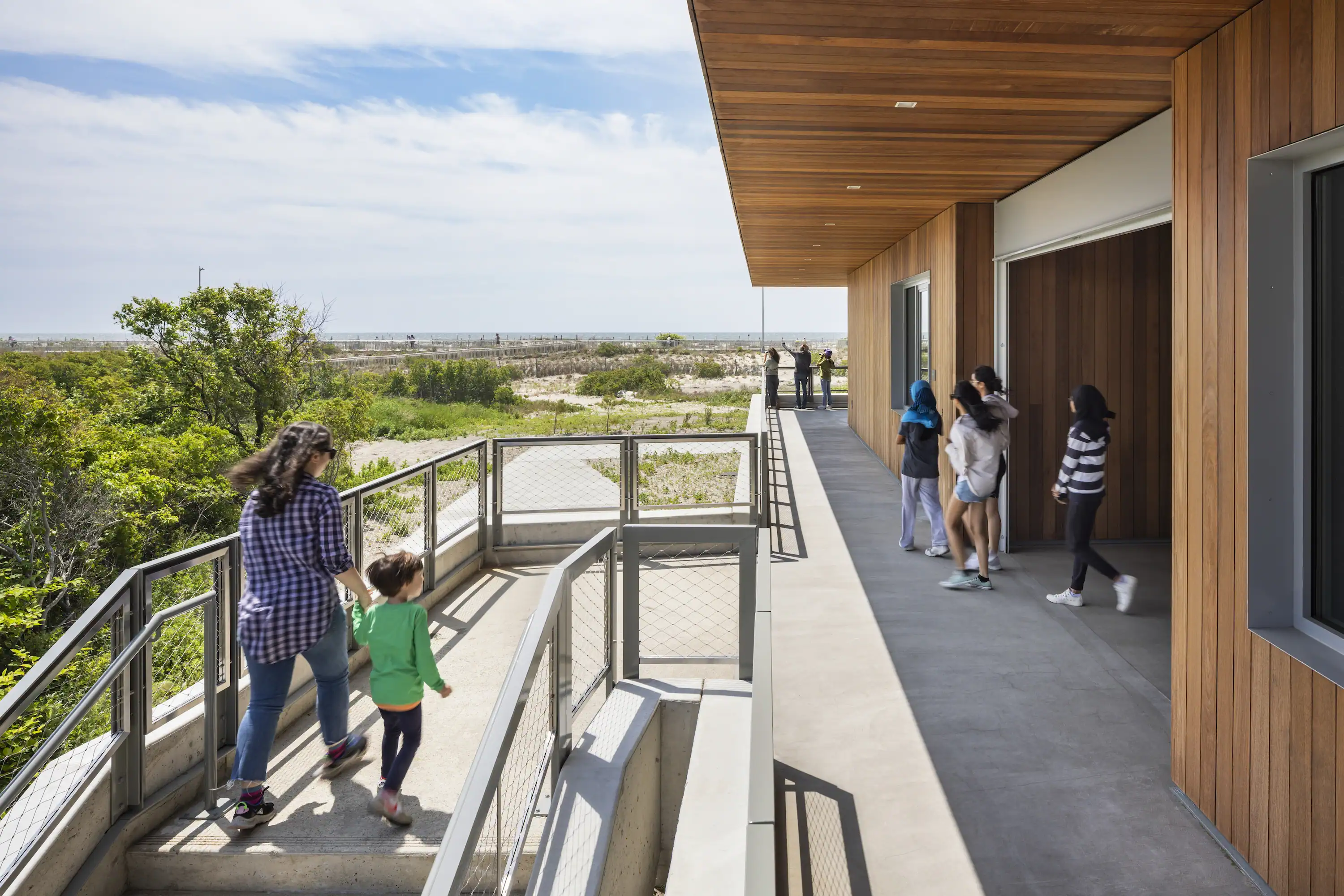
Photo © Albert Vecerka/Esto, courtesy WXY architecture + urban design
There is no interior circulation in the building, for reasons of spatial economy and because, Weisz says, the center is “oriented towards the outside.” To that end, the multi-stalled restroom cuts through the structure, and is entirely open on either end during warmer months. “You're washing your hands at a sink that's underneath the sky and you can feel the air rushing by you—you're in a building, but you’re still experiencing the elements,” says Weisz. “I think it’s important, at this point, to have architecture that's much more explicit about what it takes to moderate the elements as opposed to closing the door.” The project’s “ground-level” below was designed to withstand floodwaters and is used as storage for maintenance equipment.
“Even within the Rockaways, this project is a paradox,” says Weisz. “It's right next to the subway, but it’s in the middle of a nature preserve.” The goal, she says, was to give the project a residential scale that embraces beach architecture and shies away from industrial concrete or the standard glazed brick of many Parks Department buildings. “This is a beach house, but it’s for the people,” Weisz explains. This idea is expressed via the welcoming porch, the warm timber slatting extending to the interior spaces, as well as the floor-to-ceiling glazing and skylights that draw natural light into the community room and the central washroom corridor.
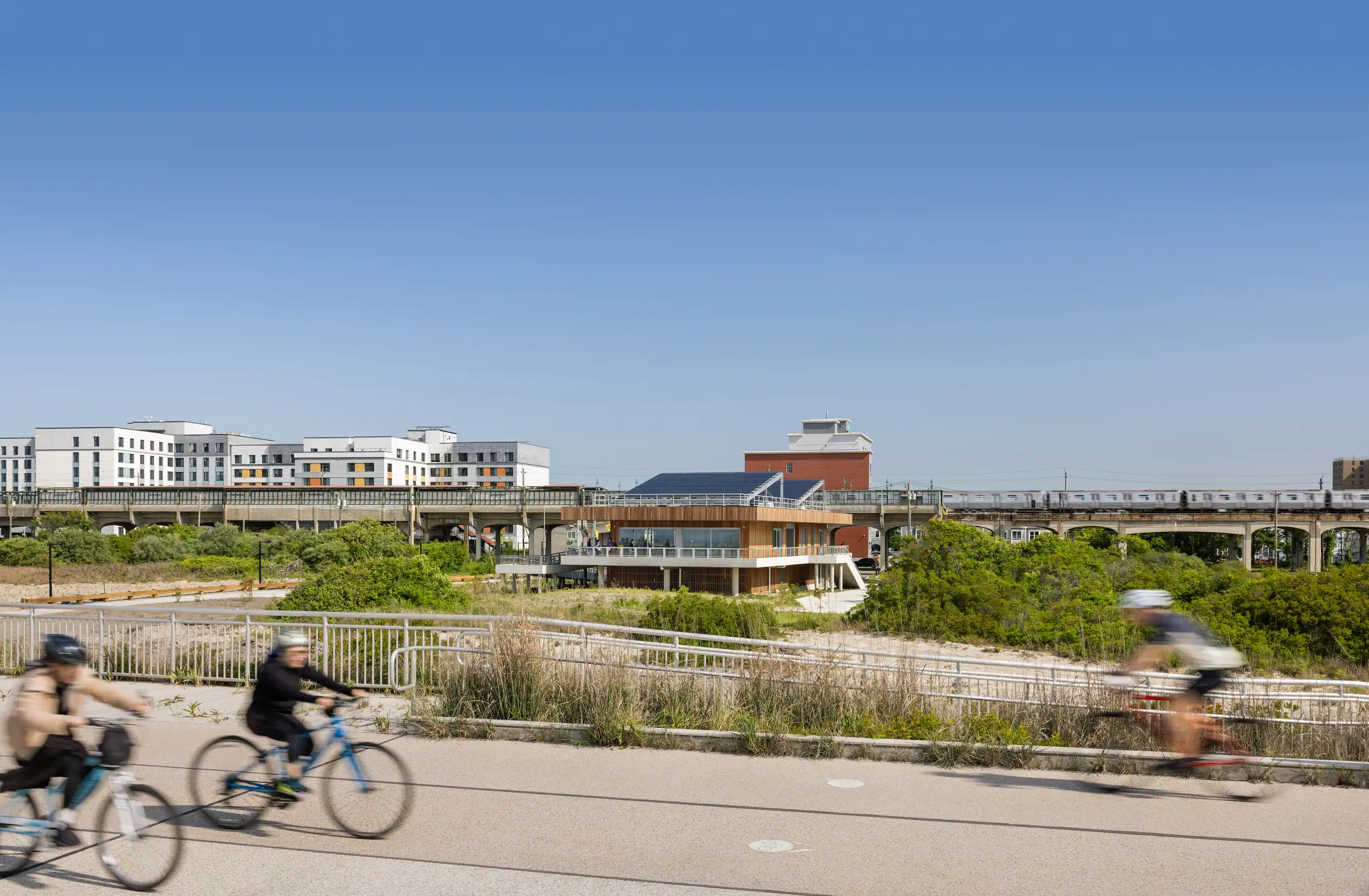
Photo © Albert Vecerka/Esto, courtesy WXY architecture + urban design
The devastation that the Rockaways endured during Sandy was New York’s canary in the coal mine, exposing the city’s extreme vulnerability to ecological disaster. In the years since, the fragile peninsula has become a laboratory of sorts, with storm-driven ruination offering an opportunity for new modes of design that sensitively address the needs of urban coastal areas during an era when extreme weather events are increasing in frequency. Though just a very small part of Arverne East’s larger ambition, WXY’s welcome center is not only exemplary of public architecture that embraces a human scale, but serves as a prototype for ecologically and socially sensitive design that both responds to, and cohabitates with, the natural world.






Post a comment to this article
Report Abusive Comment